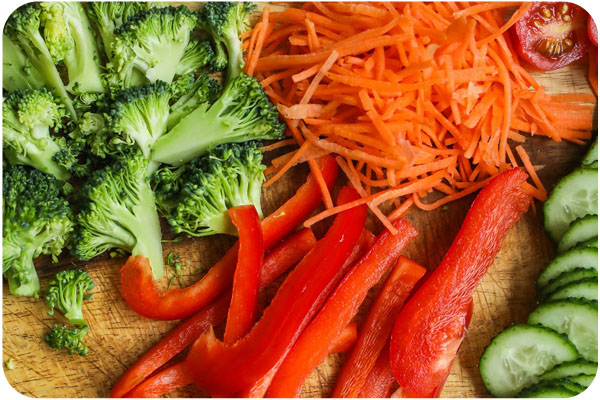
Finally, uncle Peter decided to balance his diet.
Balanced diet is a key to staying healthy. The method of nutrition of the elderly should be consistent with the principles of proper nutrition addressed to the entire adult population.
There is no one ideal composition of the diet, but the share of individual macronutrients in the energy value of the diet can be modified to some extent to suit the eating habits of an elderly person.
The Healthy Eating Pyramid is the simplest, shortest and concise way to express the principles of proper nutrition. It presents of the optimal number of servings to be eaten each day from each of the basic food groups. The higher level of the pyramid, the smaller amount and frequency of consumed products from a given food group.

Copyright © 2008. For more information about The Healthy Eating Pyramid, please see The Nutrition Source, Department of Nutrition, Harvard T.H. Chan School of Public Health, www.thenutritionsource.org, and and Eat, Drink, and Be Healthy, by Walter C. Willett, M.D., and Patrick J. Skerrett (2005), Free Press/Simon & Schuster Inc.”www.thenutritionsource.org
The first floor of the pyramid (lowest) consists of vegetables and fruits, which should be eaten as often as possible and constitute at least half of what is eaten. The elderly may find it difficult to eat vegetables and fruit, especially if they have a lack of dentition. Partially (1-2 portions), vegetables and fruit can be replaced with juices (200-400 ml). Adding them to the diet may increase the nutritional value of the diet, but also make it easier to achieve an adequate intake of vegetables and fruits.
The second floor of the pyramid is grain products. According to the recommendations of healthy eating, in the diets of older people, whole-grain cereal products with a lower glycemic index should be selected (wholemeal bread, thick groats, natural cereals, al dente pasta). Other grain products may be part of the diet, but should be eaten in moderation. In elderly people with gastrointestinal diseases that require an easily digestible diet, choose white flour cereals, small porridges and traditional pasta.
The third floor of the pyramid is made up of dairy products. It is recommended that elderly people consume these types of products daily, mainly fermented (kefirs, yoghurts) in the amount of at least three large glasses. These products can be partially replaced with cheeses. They are a rich source of calcium in the diet, they also provide complete protein. The content of milk fat in rennet cheeses is high, so it is recommended to include them in the diet in moderation (besides, they are difficult to digest).
The fourth floor of the pyramid is made up of protein products. In the diet of older people, it is recommended to use such products as: fish, eggs, lean meat and legumes. Ideally, fish should be included in the diet twice a week, and the major part of it is oily sea fish, which provide omega-3 fatty acids. The best way to prepare fish is through the heat treatment technique. In the case of meat and its products, it is recommended to choose lean products. Legumes are a rich source of vegetable protein and other nutrients (e.g. protein). Due to the fact that they are difficult to digest, it is recommended to use them in the diet of elderly people who do not have gastrointestinal complaints.
The last floor of the pyramid is fats and nuts. Fats in the nutrition of the elderly should be present as they enhance the flavor of meals and make eating more enjoyable. In addition, they significantly increase the energy value of food. In the elderly, who are underweight, they help to increase the energy value of the diet without significantly affecting its volume. Too little fat in the diet, especially in people with reduced appetite, can further reduce the enjoyment of eating. In elderly people with excess body weight, the amount of fat consumed should not be too much.
Healthy Eating Food guidelines:

Grains3 – 5 bowls

Vegetablesat least 3 servings

Fruitsat least 2 servings

Meat, fish, eggs200–240 grams

Milk and alternatives1 – 2 servings

Fats, salt and sugareat the least

Fluids 6 – 8 glasses
Download infographic: Healthy Eating Food Piramid Downloads as PDF file. Source: MIS Foundation
The above recommendations are intended for healthy individuals only. Those with chronic diseases and specific nutritional needs should consult their family doctors and dietitians for individualised dietary recommendations.
In recommendations of healthy eating, attention is paid to avoiding sugar and sweets. Elderly people who like sweets should be encouraged to reduce their amount in the diet.
For elderly people who have reduced appetite, that mayby consider including sweet snacks to increase the amount of food they eat and the energy content of their diet. Sweets are best served after a meal, as an addition to the diet.
Another recommendation is salt restriction in the elderly diet. This does not mean the complete elimination of salt from the diet of the elderly, as it may deteriorate the taste of dishes and reduce the amount of food consumed.
Various spices and herbs are a very valuable component of the diet. Their selection depends on the taste preferences of the elderly and the existing diseases of the digestive tract.
The diet of an elderly person should be supplemented with the consumption of appropriate amount of fluids. The European Food Safety Authority (EFSA) recommends that women should provide 2 liters of fluid per day and 2.5 liters of fluid for men per day, at all ages. In various countries, recommendations for the minimum amount of fluids to drink range from 1 liter to 3 liters a day.
![]() In structuring the diet of an elderly person, changes in the body resulting from the stagnation process and existing chronic diseases that require dietary modification should be taken into account.
In structuring the diet of an elderly person, changes in the body resulting from the stagnation process and existing chronic diseases that require dietary modification should be taken into account.
Download infographic: Basic Principles of the Elderly NutritionDownloads as PDF file. Source: MIS Foundation
![]()
Nutrition for the elderly:55% complete
